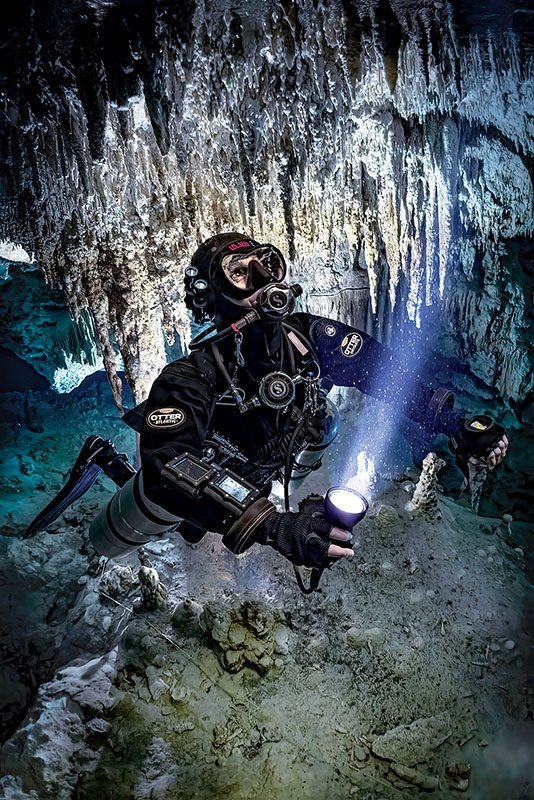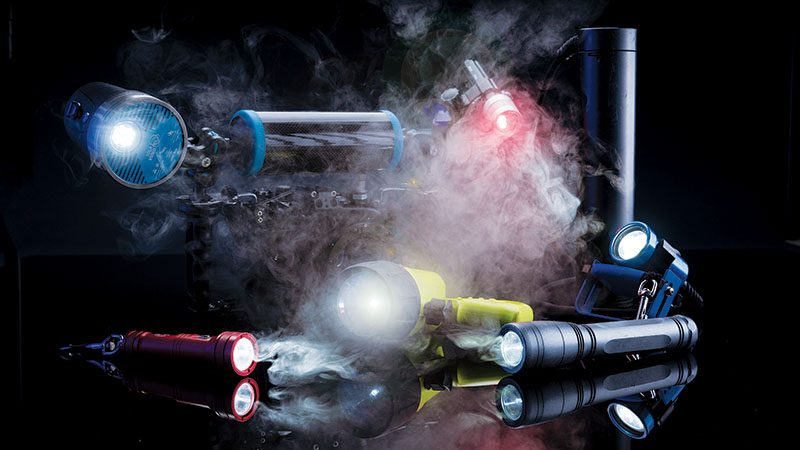The dive light is essential equipment that can benefit all divers on most dives. There are several types of lights with various uses and a few key considerations you should make before purchasing. There is no one-size-fits-all approach to dive lights, so each diver must carefully consider their own goals and needs before deciding which model is most useful.
Dive Light Uses
Divers often believe that lights are solely for illuminating what lies below the surface on night dives, but that is only one of several applications. On dives where no ambient light exists (such as night or cave diving), dive lights will illuminate your surroundings, but you can also use them to communicate with other divers.
With ambient light, dive lights can restore colors lost with depth, help with high-quality photos of underwater life, and illuminate small creatures under ledges or in crevices. You can use dive lights to communicate in these conditions, although your signals likely will be more difficult to see.
A dive light can also help signal an emergency above or below the water. A rapid back-and-forth motion underwater indicates a diver in distress. On the surface, a dive light can get the attention of the dive boat or a rescue helicopter, assuming conditions will allow it to be visible from afar.
Nontraditional uses of dive lights include illuminating a dive flag that a diver is towing at night or lighting a pavilion for setting up gear after the sun sets. One manufacturer even encourages customers to use their lights around an outdoor grill for evening postdive snacks. Not all dive lights can function safely while out of the water for long periods, however, so divers must research before using them nontraditionally.
Types of Dive Lights
Each type of dive light has unique applications. Recreational divers usually use cordless, handheld lights that are easy to transport, simple to use, and typically reasonably priced. Technical divers often prefer canister lights for their longer burn times and the ability to drop them without losing the light head. Several manufacturers have developed cordless lights with specifications similar to canister lights, so many technical divers are making the switch.
LED (light-emitting diode) lights are becoming more popular due to their powerful beams, but some divers prefer HID (high-intensity discharge) lights with beams that work well in murky water.
Divers must also consider mounting options. Some people use a hard or soft Goodman handle, while others use a hand strap. You can also mount dive lights on a mask strap or helmet.


Considerations Before Buying
High-quality dive lights are expensive, and divers should educate themselves before purchasing one. The intended application governs the burn time you’ll need. A cave diver, for example, needs longer burn times than an open-water diver doing daytime reef dives.
Your needs and uses will help determine what intensity (measured in lumens) and coverage (measured in lux, or lumens per square meter) you’ll want in the dive light’s beam. The beam angle is also crucial for using light to communicate. The tighter the beam, the easier it is to discern signals. The beam’s visibility is especially critical in conditions without ambient light or on technical dives that require clear and concise team communication.
It is important to buy a dive light from a reputable manufacturer. Their products have proven quality and reliability, and it is easier to get trustworthy repairs and assistance through customer support.
Tips and Tricks
Regardless of which dive light you choose, some tips can help make diving safer and more enjoyable.
You should perform a burn test on all dive lights every six to 12 months. Turn on your fully charged lights and put them in a bucket of water. Record the time it takes for the battery to die, and track any changes from previous tests. Burn tests help divers identify when it is time to replace batteries to optimize the lights’ performance.
Divers should use proper light etiquette while in the water. Keep the beam forward and stable as much as possible. Move the beam slowly, and avoid jerky movements that others may mistake as emergency signals. Pay attention to where you point it so that you don’t shine it directly into other divers’ eyes.
The lead diver in a group should consider dimming their light. This practice allows the lights of anyone following to be more visible, which enhances team communication and allows for safer diving.
© Alert Diver — Q1 2023